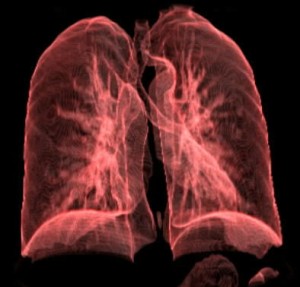If we look at the current standard of care in the United States, which is to not go out and look for lung cancer but to wait until symptoms develop; we find that 4 of every 5 patients with newly diagnosed lung cancer already have disease spread outside of the chest. A virtual death sentence. Early lung cancer detection programs with conventional chest X-ray failed to decrease lung cancer mortality because this test could not find the cancers when they were small enough, or at an early enough stage, to improve survival. For this reason, chest X-ray lung cancer screening programs were abandoned, even for high risk individuals e.g. smokers.
The electron beam CT scanner images the lung in very thin sections in just one breath hold. Using this FDA approved technology, it is possible to detect growths as small as two to five millimeters much smaller than what can be seen with conventional chest X-ray and too small for symptoms to develop. By finding lung cancer at a smaller size, when it is more likely to be confined to the chest, the electron beam CT scanner increases your odds of survival.
Early Diagnosis is Key!
90 million Americans are at risk for developing lung cancer because they are current or former smokers. Do you ever worry that about lung cancer? If you don’t, you should. The statistics are scary. Your single best chance of surviving lung cancer is early diagnosis, when the tumor is small, before symptoms develop and before the tumor has a chance to spread. Screening with the FDA approved electron beam CT scanner can save lives.

